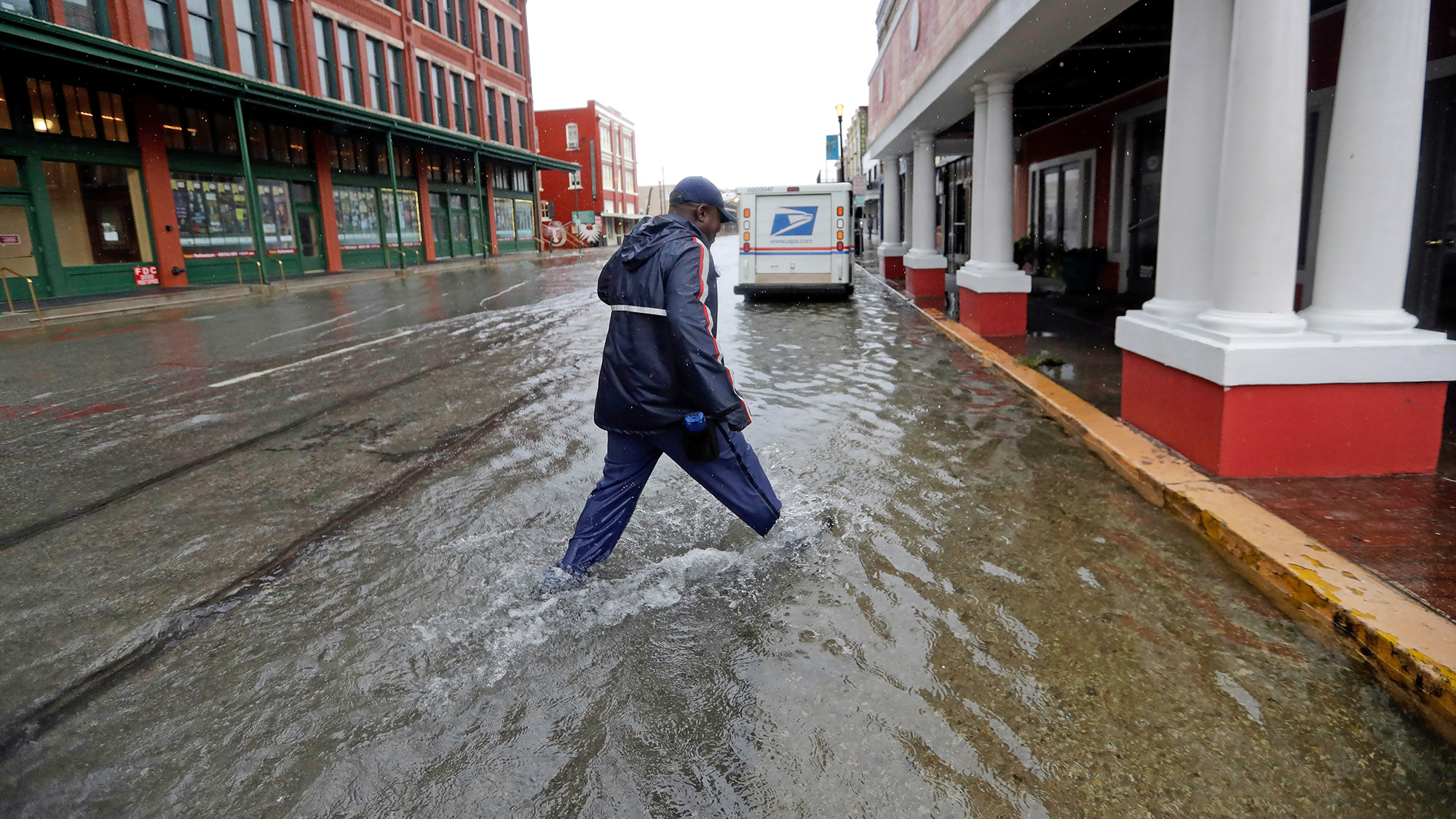Texas Is Drowning Under One of the Wettest Storms in US History
The last of these monster 1,000-year-storms was just two years ago.

Record-breaking rainfall from the tropical storm Imelda is soaking southeastern Texas. Some areas have been swamped with 20 to 42 inches (51 to 107 centimeters) of rain over just three days, causing catastrophic flooding that is among the worst in U.S. history.
Imelda, the first named storm to strike this part of Texas since 2017's devastating Hurricane Harvey, is currently the fifth-wettest tropical storm to drench the contiguous U.S., The Weather Channel tweeted today (Sept. 19). Storms that drop this much rain are estimated to appear once in a millennium, according to precipitation models created by the National Oceanic and Atmospheric Administration (NOAA). But the last 1,000-year-rainfall to inundate Texas was Hurricane Harvey — which slammed the state just two years ago.
The unrelenting rain caused "significant and life-threatening flash flooding," the National Hurricane Center (NHC) reported this morning, leading Texas Gov. Greg Abbott to declare a state of disaster in 13 counties.
Related: In Photos: Hurricane Harvey Takes Aim at Texas
To put this quantify of rain into perspective, 41 inches (104 cm) over a two-month period would be considered exceptional in this part of Texas, said meteorologist Eric Holthaus in a tweet. Such an event would happen about once in a century "in a stable climate," Holthaus said. But recent and accelerating climate change is thought to foster conditions that make seasonal tropical storms wetter, windier and potentially more destructive, Live Science previously reported.
Photos and videos shared on social media show grim scenes of the historic flooding: highways completely submerged under choppy waves and search-and-rescue operations to save people trapped by the floods. In a video tweeted by Katherine Marchand, a reporter with ABC-13 Houston, a man floats down U.S. Highway 59 South, clinging to a pool noodle.
“GOTTA MAKE THE BEST OF IT”: Guy using a pool noodle to float down the 59S feeder road#floods #Texas #abc13 #imelda #houstonweather https://t.co/UD7dvMlA5A pic.twitter.com/ttwoNBSrvYSeptember 19, 2019
Other images shared on Twitter by Rachel Keller, an anchor with 12News Now, showed cars abandoned on a flooded road, a newsroom with inches of water covering the floor and an alligator swimming near someone's porch, purportedly snapped from the porch of a home.
Get the world’s most fascinating discoveries delivered straight to your inbox.
A gator is loose in Fannett TX just west of Port Arthur. Port Arthur native David Edwards says he took this photo from his friend’s porch #Imelda @12NewsNow pic.twitter.com/pjWcPlAnmASeptember 19, 2019
In 2017, Harvey left southeastern Texas reeling under flood levels that exceeded predictions for 500,000 years, Live Science previously reported. By the time Harvey was done, it had dropped more than 51 inches (130 cm) of rain in some parts of the state, making Harvey the wettest tropical storm to ever make landfall in the contiguous U.S. But Imelda has submerged some areas that were left untouched by Harvey, according to The Weather Channel. For now, the extent of the damage the storm will do remains to be seen.
- Hurricane Season 2019: How Long It Lasts and What to Expect
- Hurricanes from Above: Images of Nature's Biggest Storms
- Photos: Hurricane Michael Toppled Over Trees and Uprooted 19th Century Artifacts
Originally published on Live Science.

Mindy Weisberger is a science journalist and author of "Rise of the Zombie Bugs: The Surprising Science of Parasitic Mind-Control" (Hopkins Press). She formerly edited for Scholastic and was a channel editor and senior writer for Live Science. She has reported on general science, covering climate change, paleontology, biology and space. Mindy studied film at Columbia University; prior to LS, she produced, wrote and directed media for the American Museum of Natural History in NYC. Her videos about dinosaurs, astrophysics, biodiversity and evolution appear in museums and science centers worldwide, earning awards such as the CINE Golden Eagle and the Communicator Award of Excellence. Her writing has also appeared in Scientific American, The Washington Post, How It Works Magazine and CNN.


